READ ARTICLE
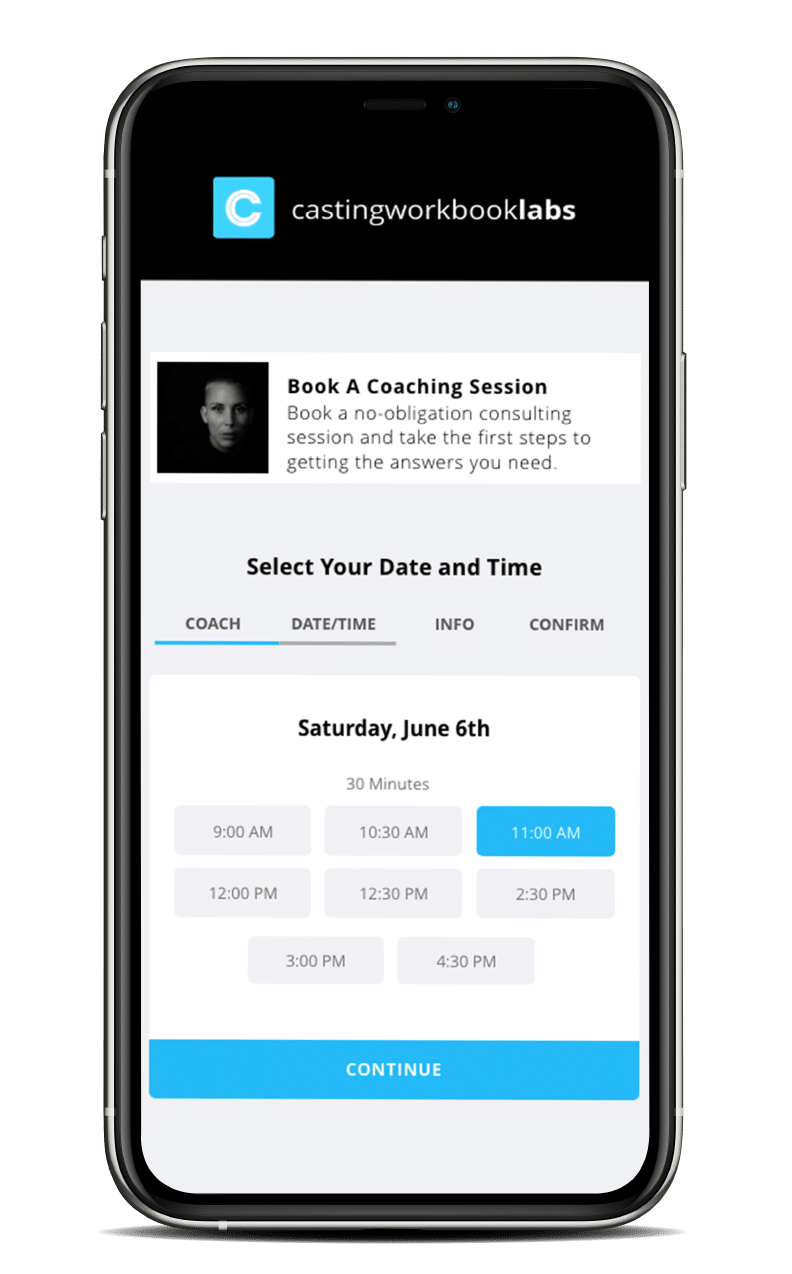
Follow A Process That Works
1. Drive Site Traffic
2. Land On A Booking Site
3. Position For The Win
How Do I Increase Demo Requests?
A booking campaign is an isolated marketing funnel that pushes the target customer from traffic source to scheduling a demo on your calendar and positioning your company as the guide who is going to show them how to solve their problem. When designing your social media posts and your website you have to think holistically.
CONTINUE READING ARTICLE
Hey SaaS friend. The above question got your head spinning? I get it. I’m on this crusade with you. There is an answer and the path forward is in your hands. You can take control of this yourself with or without an ad budget and by the end of this article you’ll have a simple framework for booking more demos.
But first, enjoy this art.

Above we have a self-portrait of Vincent Van Gogh, the guy with one ear. I put this image here because often it feels like no one is hearing our messaging and when we do get them to a demo, it’s like they don’t get what makes our product so special and they hardly retain any of the information. You’ve heard in one ear and out the other, but sometimes it feels like it’s just hitting the side with no ear. So how do we get people to listen to our message and understand enough to make it to the next stage of requesting a demo?
Here’s the tricky part. People think that the first step to doing business with you is doing a demo which is why we put a demo request button on the website. But not everyone that gets to your website is ready for a demo yet. They may be earlier in the funnel or in the middle of the funnel where they are just trying to wrap their mind around solving the problem and they think that tools are what they need to solve it.
But receiving a dump of all the features you have under the hood isn’t what’s going to solve their problem. If all they are getting is a review of tools and features then they are still having to do a lot of mental gymnastics to see if the presentation of tools can actually solve their problem. They don’t actually care about your tools, all they care about is their problem. Further more they aren’t paying attention to you unless you are talking about their problem but because the status quo is to just do a walk through of your platform they are going through the motions of what every other software platform makes them do during a demo. Instead, let’s flip this on it’s head a little bit. Don’t lead with your solution. Lead with addressing and understanding the problem.
That’s all well and good to know when you’re on the call but it doesn’t help you if you are struggling to get people to your website in the first place. But in this attention economy where there is an over abundance of things to occupy people’s attention and an attention deficit in terms of people’s capacity to handle the abundance of information out there, you need a way to first cut through it all so that they can hear you through the noise. And the only way to do that is to identify and amplify their problem. So here is the first step to increasing demo requests and it’s called Building Problem Awareness.
Building Problem Awareness
Problem awareness is a Demand Gen strategy becoming very popular in social media platforms, primarily LinkedIn and some Facebook, where you as an individual make written and video recorded posts talking about a specific problem that your customers face. This acts as a little teaser to get people to start engaging with you. Short form videos are the most effective right now at this and you want to have some piece of long form content like an article or a longer video podcast that resolves the tension built from leaving that little cliffhanger out there. We call this opening a story loop.
People understand the world through stories and by opening a story loop you hook the viewer into wanting to know how the story ends. You can leave cliff hangers all over social media and watch as people start to engage as they work to process the problem through their own commenting.
While many people will make really smart comments and answer the problem for you, a couple of people will actually inquire about what the author of the post proposes is the problem. In fact, often you’ll see content creators with a larger existing audience posting problem awareness content and waiting until someone asks for the extended version of the video to find out the answer. This increases engagement because they can’t just silently click through as if they were never there, they have to ask the question. This is how you know they don’t know the answer to the problem.
All of this is important and it’s advantageous for individual employees of companies or even the founders and c-suite to be out in the world raising problem awareness. In all actuality the executives should be the one’s leading this because they carry so much authority as business leaders.
The content on your business profile page and your website landing pages will become the answer to the problem awareness you are spreading. In fact this is where the next step to design a booking campaign begins.
Design A Booking Campaign
A booking campaign is an isolated marketing funnel that pushes the target customer from traffic source to scheduling a demo on your calendar and positioning your company as the guide who is going to show them how to solve their problem. When designing your social media posts and your website you have to think holistically.
What do you want the deliverable to look like (i.e. the demo)? What do you want the marketing messaging to look like? It’s very important to look at both ends at the same time.
For example, if your goal is to get registration for a webinar you need to be promoting the webinar through your traffic source. But it’s not enough to say “Hey, here’s a free webinar”. The webinar is only the vehicle for the advice you are giving away for free. It’s not the webinar itself that holds value. Most of them don’t. The value is in solving the problem that matters to the webinar attendee. So you have to begin with the end in mind and ask yourself, will this piece of content support my end goal which is to book a webinar (or event, demo, workshop, etc.)? And will any of this solve a problem?
To answer that you have to know what the problem is and know how people are searching to figure out that problem. The way I do this is, I search basic key words related to my solution in Google or by using the keyword planner in Google Ads. I use that to figure out what people are searching for and what questions they are asking. If you scroll down the Google search results page you’ll find a section that says “People also ask” with a list of questions. I copy and paste those into a document and then I scroll to the bottom of the page and find the section that says “Related searches” and I copy and paste the additional phrases that come up. Then I take those phrases, measure search volume, and prioritize these topics into the subjects of future Booking Campaigns.
For those who understand SEO, you’ll recognize this technique, but I don’t find it helpful or fulfilling to simply think of this as a “hack”. I use this to get inspiration for a starting point for my content. In the past, I’ve been way more free spirited in my content approach with limited results. The constant thinking of new things to talk about online was getting exhausting and just out of running out of things to write about, I figured I’d start doing more research before I got started. What I found in the process was that when I had a problem to start with, I usually could think of creative ways to answer the problem using the various resources that I consume on a regular basis such as books, articles, and podcasts.
Now all I’m doing is taking my list of researched problems, applying my solution to those problems and designing a booking campaign that begins with a post on Linkedin whether that be an image with words on it, a link to an article like this one, or a video shot on my iPhone with a nice microphone and decent lighting. That content speaks to the problem and then I send them to a booking site landing page.
Booking Site Landing Page
At Periodic, we like to drink our own champaign so all of our landing pages are booking site landing pages, or sometimes we just refer to them as “booking sites”. The booking site is the page where you send traffic with hopes of a conversion. Traditionally, for less transactional businesses, the conversion is a contact form submission or a phone number. The problem with these conversion methods is that the lead doesn’t always connect. They end up in your CRM and you are left with a game of phone tag and email follow up trying to get in touch with the lead to discuss business. That’s insanely inefficient and contributes to over 30% lead slippage.
The other piece of the landing page is that it has to have words and images that tell the person they are in the right place and that the offer they saw in the ad or content piece is going to solve their problem.
The images you use are what orient your viewer to know they are in the right place. People don’t do a ton of deep reading on websites and articles unless they are really well written. Instead they scan for pertinent information. The images help them identify what’s pertinent along with the section headings.
When they first land on your booking site they need to answer three questions immediately. Is this the problem they are trying to solve? Is this going to have meaningful impact on their life? Where do they start the buying process? All of that information needs to be answered above the fold and in some cases, if it can be answered right there, that’s all they will need. But for the people who are still early on in the awareness stage or they are in the consideration stage then maybe they aren’t quite ready to commit to a booked demo.
For that reason you want to extend the site below with more content to help them understand your position as the guide. You have a few options in terms of what you do here. If you wrote an article you can syndicate the article below the header. This is effective if you are using individual booking campaigns as SEO content pages. You can also use the space below to build out a more robust marketing page with different sections agitating the problem, defining the stakes, providing a value proposition, further developing your company as the guide, adding testimonials and videos, and providing other pertinent information like pricing and the plan for how you solve the problem.
You want to experiment with different page content strategies until you find a page that is converting well. The content you lead with on your traffic channel could be attracting more top of funnel visits and if that’s the case your landing page content needs to have commitments that are less heavy to the site visitor. This would be things like pdf downloads (my preference is non-gated), white papers, case studies, video workshops, webinars, podcasts, events. Anything that will provide value to an ideal customer that is most likely 12–24 months away from allocating finances to solve this problem with somebody’s help.
But if your content is a little more middle of the funnel, then you want to start providing information and content that reflects greater buying intent. Maybe at this stage they are a little more willing to engage via chat or by joining a live demo where the pressure isn’t on to purchase but they can participate as an audience member and ask questions. This is true for those that are bottom of the funnel but at this point you want to be far more direct about asking them to book a demo. This content by the way, may be more feature and detail heavy because at this point they are searching for the information that helps them decide whether you check all the boxes.
Booking Function
More and more marketing and sales directors are coming to the complete realization that online booking is an essential for website conversion. People are becoming less patient for the processes that include a lot of back and forth contact. So many individuals have online booking links and the convenience of just scheduling a time is something that consumers are getting so used to that they will eventually get to the point where they are turned off by static contact forms.
By having a booking calendar on your website you will be able to intake the lead form and dispatch the lead to an Account Executive, inside BDR, or Demo Presenter. Depending on your current lead volume you have to figure out whether it makes sense for someone junior or someone senior to take these calls. If your SaaS platform is serving small business, then it makes the most sense to send these leads to someone more junior because the cost of selling to small business can sometimes swallow up the profit potential if your SaaS is lower cost. However, if your SaaS is expensive or made for enterprises, then you’ll need someone senior taking these calls because it takes a much more skilled business developer to act in a more consultative role in helping the searchers for corporations to make a proper decision.
If your sales team is large, you’ll also need a system that is powerful enough to dispatch the demo to any number of BDRs on your sales team or to organize and qualify them by expertise or by location. To facilitate the right software selection it’s helpful to work with a tech firm that takes on a more consultative and service oriented approach to help you customize your booking solution rather than a self-service app that your team has to figure out on their own.
The form questions are also a big consideration when you are looking at conversion rate optimization. Every time someone has to click one more time or exert extra mental energy to filling out information, the rate of conversion goes down. Using Google Analytics you can track each stage of form clicks to see where the are getting stuck and falling off the form. The more information you require, the fewer conversions you’ll have. So it’s all about finding the balance between getting the info you need and getting the visitor to complete the action.
This is different however, if the form itself offers value. Let’s say your form is used as a price calculator. Let’s say you design your form to take information like number of users and the industry they are in and you’ve crafted your form to be intelligent enough to calculate a monthly cost based on their total number of users according to their industry. This would allow you to create custom pricing within the form while accounting for variables that influence cost.
This is actually quite valuable because a corporate study in McDonalds showed that when users of the touch screen kiosk in their restaurants ordered food they spent 33% more money than the people who ordered at the counter. People are willing to spend more money when they are in control of the price rather than a sales rep. This is key insight for those enterprise SaaS platforms that necessitate a more custom pricing system.
If your platform is more self-service, there is no reason why you wouldn’t want to enable more of the sales process to be in the hands of the consumer. It’s a lower cost to you because the more touches you have with a person the more costly it is on payroll. However, selling mid-market and enterprise SaaS software usually requires more interaction with a human. This is why the booked demo is so important. It gives the sales person the opportunity to consult the prospect on solving their problem, which is really what they need more so than an overview of the software. Using a form calculator gives them a ballpark idea of what the software can cost so that they can decide whether they have the budget for it in the first place.
While it is tempting to be shy about having a high cost platform it’s better to be transparent up front. The types of businesses that you are targeting are used to paying a certain amount for software. If they are turned off by something in the hundreds or thousands of dollars in MRR, then they aren’t operating a business that is used to paying that amount for software which means that they are not your customer. Conversely, if a large corporation sees your price and it’s a low cost, they will assume that you are a consumer or small business product and not a viable solution for their enterprise. Being up front about it actually saves everyone a lot of time. The key is making sure that your traffic source is targeted appropriately to begin with so that you are not driving traffic from the wrong audience.
This is why focusing on one booking campaign at a time is essential because it provides a targeted approach to attracting the right audience, providing them with the information that relieves their specific problem and asks them to connect with you about the specific thing they want to talk about. But it doesn’t stop there.
Enablement material
When you invite a person into your booking funnel, it’s hard to tell what stage of the buying cycle they are in. They could be in the early stages where they are just now hearing about your product and their need could be latent, meaning that they have the need but they don’t recognize it as something they have to have. The opposite of being a have to have is being a nice to have. Businesses don’t spend a lot of money on products or services that are nice to have. It isn’t until the problem is made fully manifest and it is clear that they have to have the product. Enablement materials are those handouts, tools, and digital downloads that enable someone to sell the product. The materials pave the way to the sale by agitating the problem, enlightening the consumer on the value and showing the customer what their life will be like when they use the product.
In our digital world, brochures and booklets are being traded in for their digital counterparts. A pdf download with extra information formatted for something readable is an example of materials enablement. A sales tool like we use for building booking campaigns with automated emails is an example of enablement. In short, it is any material whether print or digital and any process that supports and facilitates a sale.
Once a customer is emotionally invested in you they will look for ways to feel like they have actually made a good deal. They are actually processing logical reasons explaining to themselves why they made an emotional judgement call. This is the purpose of the deeper pages with longer form written content. It is for the buyers who really need to get down to brass tax to understand exactly what they are getting so they feel comfortable with the decision.
The challenge again, is that people enter engagement at varying stages of readiness and ability to make the decision. Common in enterprise selling, the person searching is not the person who is buying. The executive gathers their team to address company problems. The team responds and says they need more tools. The executive tells her team, go out and find some and report. The team searches and has to comeback with information. This is where the enablement materials really help. Not only do you want these downloads and videos to be available on the website, you also want to send them via email after they book a demo.
Many people put the email sequence after the demo. But at Periodic we put the sequence before the demo. The reason we do this is because we still have their attention. Long ongoing email sales campaigns that are poorly written, all in plain text, may be getting opened but they are rarely getting read. People just don’t have time for your email. Every morning they wake up to a full inbox of people trying to sell them stuff. It’s hard to compete with that and yet, when an impactful email is sent, it is still a powerful connection tool that does help convert. So we put the emails in front of the meeting to provide additional information that will help enable the sale.
I recommend three emails with a specific purpose.
Email 1: The agenda.
The first email is more of a confirmation that they have booked the demo. It should have the date and time for adding it to their calendar. Cancel and reschedule links. And the meeting agenda.
Prior to the agenda write one statement of empathy and one statement of authority. Keep this very simple and almost understated. We’ll drive more empathy and authority later.
An example would be, “We get that managing an office can be hectic which is why we find so much joy in helping our top tier enterprise customers in the Fortune 500 take control of their offices and stream line processes.”
Then transition to the agenda with a statement like, “Here’s what’s on our meeting agenda:”
The agenda should only be three items. No more, no less. In bullet points.
The first item on the agenda should be about the problem. You want to hook them and the problem is the hook. They need to know that this is going to be about helping them, not just about you pitching your product.
An example agenda item would be something like, “Audit and review of your current process and where you feel it’s breaking down.”
The second agenda item is the solution. You are being bold with that first statement and so now you want to resolve that tension by providing them with a path through it. “Look at examples of how other companies are solving this exact problem through our platform.”
The third item is the result. We want to end this meeting with success. If they are investing time they need to know it will be worth it. An example here would be, “Develop a winning strategy for managing your office.”
Do you see how you are already setting this up to be a more qualitative experience than just a review of your product features? It’s about taking action and being consultative.
Email #2 The Guide Email
This is the email where you qualify yourself as their guide. It’s important to frame yourself as a guide because you want the person to be looking to you for answers not dictating answers and forcing you into compliance. That is a terrible working relationship and it doesn’t serve them very well. It also puts stress on your company because you end up being treated like hired hands.
The two key elements to becoming the guide are empathy and authority. When you have an empathetic tone it allows the other person to feel safe being vulnerable with you. When they are vulnerable they are able to let down their ego, admit that they are flailing, allow themselves to receive guidance.
Statements of empathy begin with phrases like “we understand that…” “we get that…” “we know how it feels to…”.
The second half of being the guide is the authority piece. What makes you the domain expert? Why should they listen to you? Have you solved this problem for an impressive number of clients or size of company? Have you written a book about it or spoken on the national stage? Do you have any recognitions, awards, or certifications?
Social proof also helps to validate your authority so add to this a testimonial or your review rating. Insert logos from the companies you have served. Show them you can be trusted.
Email #3: Case Study
The third email should be positioned like an appointment reminder plus an inside look at a success story.
Writing a case study slide deck or video is its own article beyond the scope of what I’m writing here today. But suffice it to say that in this email we go back to the agenda pattern of problem, solution, result.
The case study will introduce them to a customer and use visuals. Try to frame the case study in a paradigm shifting event. “The company thought things had to be one way but then they found out through working with us that it can be so much better.”
Talk about the problem they were facing, the way your solution was implemented, and the results of working with you. It takes work to develop this case study but it provides a powerful story of real world results that is hard to turn down.
What if you don’t have a case study for this specific campaign? That could be the case. You just might not have an existing customer that fits the bill. That’s ok. Stick with the paradigm shift and the appointment remainder. Write a couple of short sentences or paragraphs that express your enthusiasm for meeting and then tell them it’s because so many people are experiencing business in a way that just doesn’t work, but that it can be so much better.
The paradigm shifting idea of this article is that so many people are driving people to demos where they just mindlessly walk through product features of their app, but that isn’t actually what people want. In fact, this practice is so prevalent that it’s actually making people reluctant to take demo appointments. What they really want is someone to consult them on how to solve their problem with the help of tools which will ultimately drive more demo requests.
The last piece of the email is that it should have a well designed header and footer to orient the reader and provide a mini-website experience where they can get the main points of the body and navigate to other resources that can be shared with their team or help them to understand more about your company preparatory to the call.
Make the Demo a Deliverable
If all you are doing during the demo is making a hard pitch on the product you are just consuming the resources of the viewer. Don’t get me wrong, you want to invite people to do business with you and be very clear about that. But the finesse comes from making it both consultative and collaborative.
I’ll drive home again the point that they are there to solve a problem. The features do that at a bare minimum and if all you’re discussing is features, you may as well record a video of yourself talking about each feature and save everyone time by putting the video on your website and having your product be self-service.
But if you’re reading this and have gotten this far, you probably aren’t selling a self-service product or at least it isn’t priced like a self-service product and your target customer needs more human interaction in order to buy.
There are a lot of reasons they may need to talk to a person. It could be that they are implementing it company wide and that requires hands on on-boarding. It could be that they need a certain level of customization as part of the order. Or, if you are hearing what I’m saying, it’s because people pay more money for companies that consult through their platform rather than selling a box of tools.
If all you’re selling is a box of tools, there will always be somebody with a cheaper set of tools or a smaller assortment but targeted to what they need. Selling the tools alone is a race to the bottom because the speed at which technology gets developed in areas where there is market competition, companies continuously leap frog each other with features and the tool ends up becoming a commodity.
Instead, wrapping together expertise with the tool is the best way to differentiate yourself from other sellers.
I’ll give you an example. For a number of years during and after college, I started a business as a paint contractor. Every paint contractor worth their salt knows that you buy paint from a specialty paint store. The big two are Sherwin-Williams and Benjamin Moore. You do not buy paint from Lowe’s or Menard’s. Now, the most expensive and highest quality products that Lowe’s or Menard’s offer are at the lower price point and lower quality end of those products sold in the specialty stores. So if you wanted to compete on price you could but most quality paint contractors opt for the higher end products at the higher price point. This isn’t just because of the better product in the end. It’s more than that. Because if all we cared about were the apples to apples comparison, you may as well save more money. However, the big box stores do not come with the level of expertise surrounding the product that the speciality stores have. What happens when you have a coatings failure or the you’re not sure what product to use for a specific surface? The part-time college student at the big box store doesn’t know how to help you. But the rep from the specialty store will travel to the job site to provide recommendations. The stores will deliver the products for you. You have an account and the cell phone number of your rep so that you can call them at any time.
The idea of a completely self-service tool is great and there are companies that go that route, but they don’t have sales teams or do live demos. And they don’t go after the big contracts like you do. They don’t have the robust feature set that you do and they probably aren’t as niche of a solution.
So you have to make your sales process more than a transaction. You have to make it a consultative experience. You have to bring your expertise to the table. Which means that your sales rep has to be an expert in the area of your target customer’s problems. They have to know how to solve the problem and the person walking away from the demo needs to leave with a better understanding of how to solve your problem with or without your product.
Over the years I have personally talked with several different companies about maintaining SEO for me. I only remember the names of two companies and have only recommended those two companies. Those companies are the one’s who helped me understand my SEO problem and who provided me with a solution that I could either do myself or employ them to do it for me.
What’s great about taking this approach with selling a SaaS platform is that the person will walk away from the conversation either knowing that they do not have the bandwidth to employ your plan on their own and they trust your guidance and help, or they will walk away feeling empowered to do it themselves, they will enact the plan, which will make them too busy to maintain the plan and at which point they will come back to you and say, I got started but I need you to take over.
This works over and over and over again. People take free advice and when it’s good they trust it but there always comes a point where the advice doesn’t actually solve their problem. You could give an individual trying to build a house all of the advice in the world on how to build their house from the ground up. But it doesn’t get the job done for them and who has the bandwidth to build a house with their bare hands anymore. You have to look at their problem like they are trying to build a house on their own. Give away the advice. Do it. They’ll trust you for it. And when they realize they’ve bitten off more than they can chew they will come back for help.
When you get off the call send them a thank you email with a deliverable asset such as a pdf slide deck or a book (ps, you only need 24 pages of written content to self publish a physical book on Amazon).
Now, this last section was not a step by step how to of how to run an effective demo. There is formula to it but that’s beyond the scope of this article. But follow me to read more articles surrounding this topic. What I have done is laid out the pieces of an effective booking campaign that will land you more demo requests.
Let’s recap.
Step 1: Create problem awareness content for a traffic source.
Step 2: Drive traffic to a booking site landing page.
Step 3: Have an online scheduling system they can use to book the demo.
Step 4: Develop sales enablement material including a pre-demo email sequence.
Step 5: Make the demo experience a deliverable in and of itself.
Now get out there and get the work done! This is just free advice but until you actually take the steps to “build the house” you’ll never have a roof over your head. Go build the funnel and get more bookings!
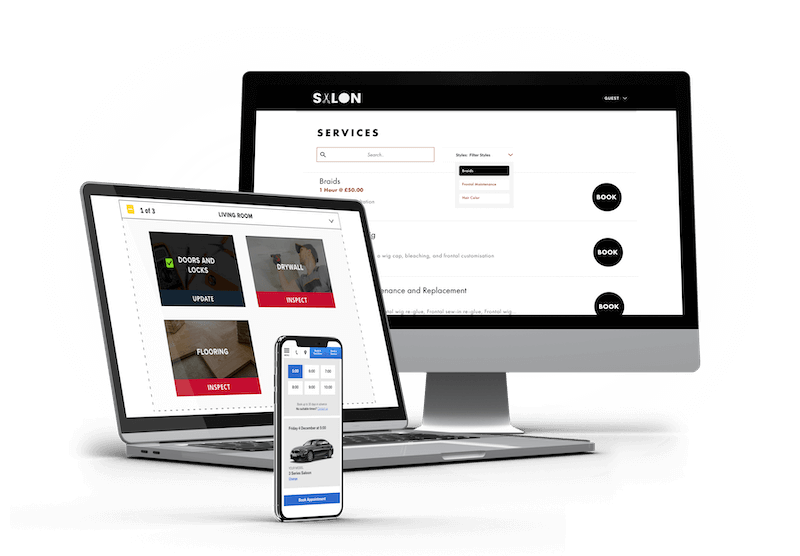
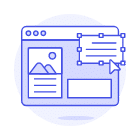
Dynamic
Forms
We enable online sales and services by creating forms tailored to specific industries.
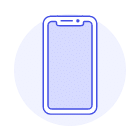
Mobile First
Design
Responsive web app for desktop and mobile. 76% of clients book on mobile.

Take Payments for Appointments
We don’t just facilitate the sales appointment. We facilitate the entire sale.
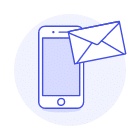
Automated Email/SMS Notifications
Reduce no-shows by 29% with reminders and reschedule options.
Best-In-Class Booking + Expert Guidance
Driving demo bookings is the core purpose of your website. It pays to get it right with a little help.
A Strategy
That Books
Getting more demos booked on your sales team’s calendar is about more than just having the technology that can do it. You need a strategy that is proven. Working with Periodic booking strategists will help you develop a process for high intent bookings that is repeatable and scalable. Get it right with a little help.
Beautiful and Functional Design
From custom design that is tailored to your brand all the way to technical implementation our success team is dedicated to providing you with a website booking experience like none other. Set yourself apart in both function and aesthetic so that your customers will be confident that you are the company for them.
Find Success with Periodic
Our customer success management makes Periodic the perfect partner for mid-market and enterprise Saas companies. We act as an extension of your advisory team helping you maximize the performance of your booking site and ensuring fast and steady growth as you take your business to the next level.
